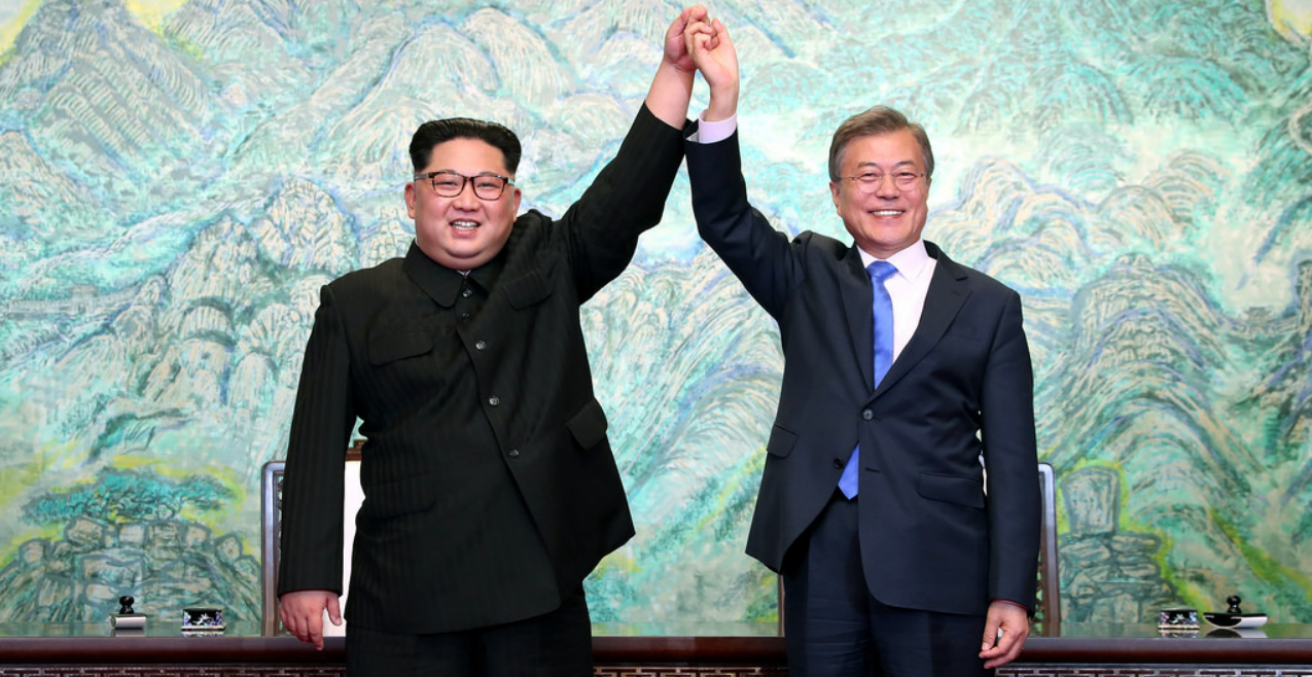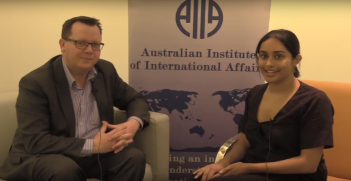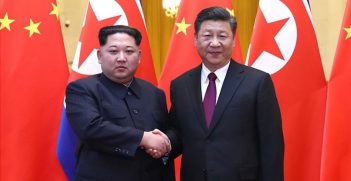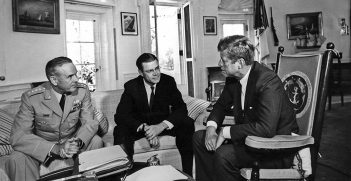Denuclearisation of the Korean Peninsula: Explaining the Stalemate

With the conclusion of the third inter-Korean summit last week, the next challenge will be to find common understanding.
The Korean War has been going on for 68 years. Despite a ceasefire in effect since 1953, the border at the 38th Parallel is still patrolled by soldiers, ringed with barbed wire and covered in landmines.
Until 2017, Kim Jong-un was busy conducting in-your-face nuclear diplomacy on land (underground blasts), on water (ballistic missiles) and in the air (land-based rockets and sea-based missiles fired into the sky). Having demonstrated thermonuclear and intercontinental ballistic missile (ICBM) capability in 2017, he may well have concluded that six nuclear tests is an adequate base from which to expand North Korea’s nuclear arsenal without additional testing. This incidentally – or maybe not so coincidentally – is the same number of tests as India and Pakistan conducted. The quality of North Korea’s nuclear program can still be improved and strengthened with subcritical testing that does not produce a nuclear yield and thus cannot be detected.
The Singapore Declaration
The Singapore Declaration signed by President Donald Trump and Chairman Kim Jong-un in June agreed on the roadmap for peace on the Korean Peninsula through a numbered sequence of undertakings:
- The leaders promised to establish new US–North Korea relations “in accordance with the desire… for peace and prosperity.”
- They agreed to make joint “efforts to build a lasting and stable peace regime on the Korean Peninsula.”
- North Korea committed “to work towards complete denuclearization of the Korean Peninsula.”
- The leaders pledged to work together to recover the remains of US prisoners of war and soldiers missing in action.
Despite Trump’s declaration that North Korea is no longer a nuclear threat – and his positive assessment of progress in his speech to the UN General Assembly this week – North Korea’s production of ICBMs and nuclear materials is continuing. A statement from Foreign Minister Ri Yong Ho on 9 August noted that North Korea “will preserve our nuclear science as we know that Americans will not abandon their hostility towards us.” The Central Committee of the ruling Workers’ Party also stated in July that North Korea would not relinquish its nuclear capability: “nuclear is a precious legacy … if there is no nuclear, there is death.”
There are three explanations for the stalemate following the Singapore Summit.
He blinked first
The two sides mirrored each other’s misperception of the main motivation for the summit. Each thought the other had blinked. Kim believed his nuclear strength had forced Trump to the summit without preconditions, making him Trump’s equal as the head of a nuclear-armed state. He could afford to explore possible avenues for a peace regime, he thought, because his nuclear sword provided immunity from US attacks. But the Americans concluded that sanctions had brought North Korea to its knees, leaving Kim desperate to conclude a deal on US terms.
Different understandings of key terms
“Denuclearization” denotes different things to the two sides. The US, believing Kim had buckled under pressure, understood this to mean achievement of its long-sought goal of “CVID”: “complete, verifiable and irreversible denuclearization” of North Korea. Kim, mistakenly concluding his nuclear deterrent had brought Trump to the summit, believed he was on the cusp of achieving the long-sought goal of a nuclear-free Korean Peninsula.
Similarly, “security” and freedom from threat for North Korea mean a guarantee of no US military strikes or regime change; a withdrawal of US forces from South Korea; an end to the US alliance with South Korea and Japan; and an end to criticisms of the North’s human rights record. But for the US it means an end to the North’s serial provocations and attacks.
Irreversibility
Most importantly, each side wants to ensure that steps taken by the other cannot be reversed in the future. Especially with the great wall of distrust built up and hardened since the Korean War, neither side will accept good-faith gestures without concrete actions. The North demands that, consistent with the Singapore Declaration, Washington and Seoul must proclaim an end to the Korean War as the initial step in a peace process. The end-of-war declaration is a potential deal breaker.
Progress
North Korea’s foreign ministry complained it has taken “such practical denuclearisation steps as discontinuing nuclear test and ICBM test fire, followed by dismantling the nuclear test ground”, but instead of reciprocating, the US was unilaterally demanding “denuclearisation first’”. Washington insists that the ball is in Pyongyang’s court to prove sincerity by providing an accounting, subject to independent verification, of its stocks of nuclear material and production facilities. But this would introduce lengthy delays while the US attempted to verify the information. Without any reciprocal concession from the US, it would represent a capitulation and loss of face for Kim.
Harshly criticising President Barack Obama’s policy of strategic patience, Trump instead instituted a policy of “maximum pressure and engagement”. Ironically, three generations of the Kim dynasty have followed this policy, while simultaneously demonstrating bottomless strategic patience. In the last 70 years, they have seen 13 US presidents come and go, six Democrat and seven Republican. Kim Jong-un has every expectation of being in power long after Trump has faded from memory. He can afford patience and may be consciously modelling his behaviour on the Pakistan and India precedent: buy time while wearing down US opposition and letting Washington get used to the new facts on the ground.
South Korea’s role
In this process, the role of South Korea’s President Moon Jae-in has become increasingly critical. He has quietly reinvented himself from a US ally into an intermediary between Pyongyang and Washington. He has held three summits already with Kim, seeking to normalise inter-Korean relations and to lower the temperature in US-North Korea relations. After the third inter-Korea summit on 18-20 September, a number of concrete agreements were signed in the Pyongyang Declaration to constrain high-risk military operations along the demilitarised zone by the two Koreas. And the promise of improved North Korea relations with the US was reiterated in return for “corresponding measures” in “the spirit of” Singapore. The next challenge will be to find common understanding of these measures.
Ramesh Thakur FAIIA is Emeritus Professor at the Australian National University and co-convenor of the Asia-Pacific Leadership Network for Nuclear Non-Proliferation and Disarmament. He is a Fellow of the AIIA.
This article is published under a Creative Commons Licence and may be republished with attribution.





